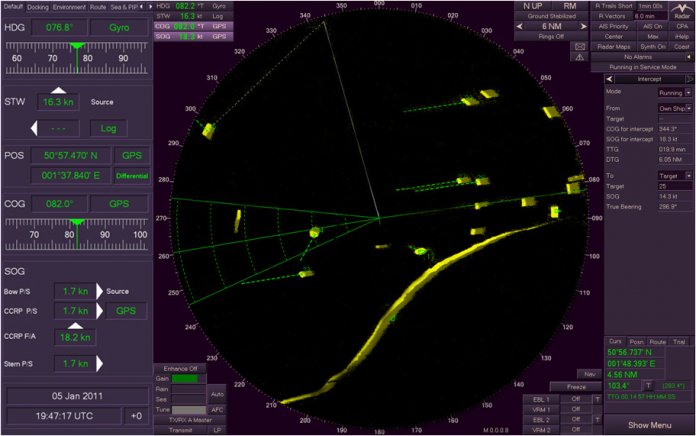Sperry Marine has announced the release of Additional Military Layers (AML) for its VisionMaster series of radars and Electronic Chart Display and Information System (ECDIS).
The AMLs are applicable to defence and naval operators in that they support command and control (C2) and provide digital navigation for situational awareness on Sperry’s commercial radar systems.
“In recent years, navies have had to balance performance requirements against tight budgetary control at a time when the scope and number of missions has increased,” said Christophe Rios, global line manager, Radar and Chart Displays at Sperry Marine. “The VisionMaster series of radars and ECDIS has been developed using the latest technology to keep costs under control but still with a choice of configurations and options needed for any type, size and class of vessel.”
Enhancements to the VisionMaster Radar and ECDIS for naval users include features such as ‘Red First Strike’, providing an immediate indication of fast moving targets, such as fixed and rotary wing aircraft and fast attack craft, by highlighting them in red.
A Target Intercept feature allows the operator to plan and execute intercept manoeuvres between one vessel and another including from ‘ownship’ or from one tracked target or AIS target to another.
There is also a Freeze Frame function that allows the radar picture to be ‘frozen’ immediately before any need for radar silence during a mission.
To overcome the challenge of station-keeping and monitoring surrounding vessels, the radar operator is able to set up a sector for each vessel nearby which will allow them to see at a glance if any vessel has moved out of its correct position.
”It is clear from growing demands of the role they play that the next generation of smaller naval assets will have to move up the value chain in terms of capability, providing very powerful platform for a variety of missions,” stated Per M. Soerensen, business development director International Defence, Sperry Marine. “Linking the requirements of tactical operations with higher specification equipment can provide an increased level of navigational performance and improve the human-machine interface.”
by Andrew Drwiega













